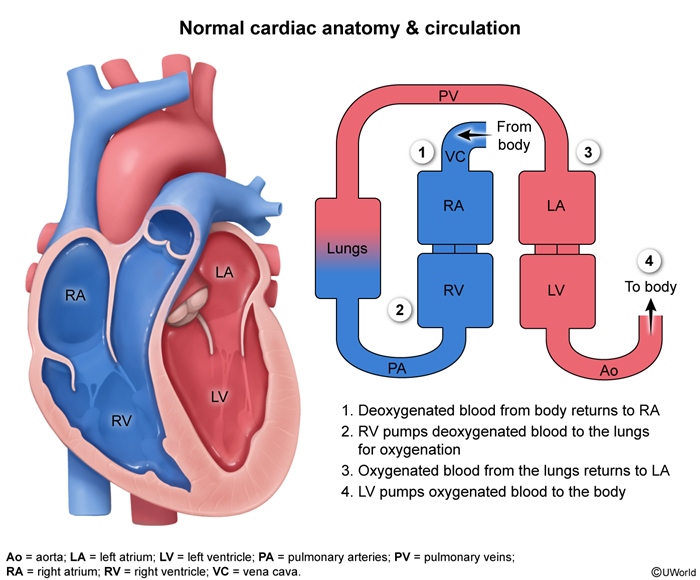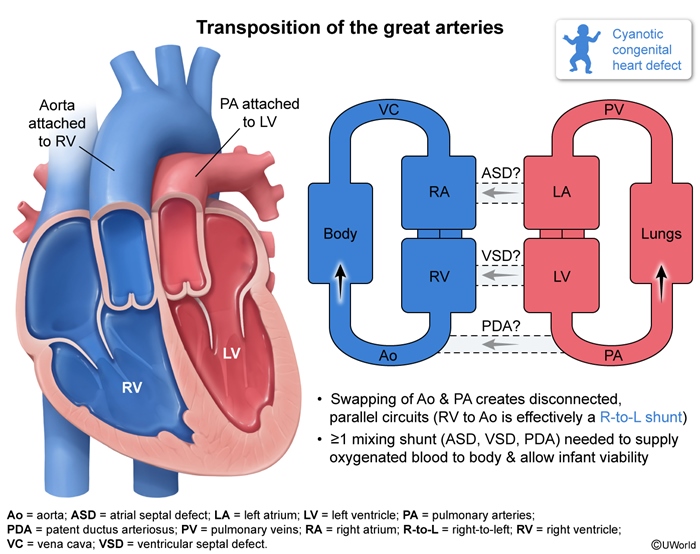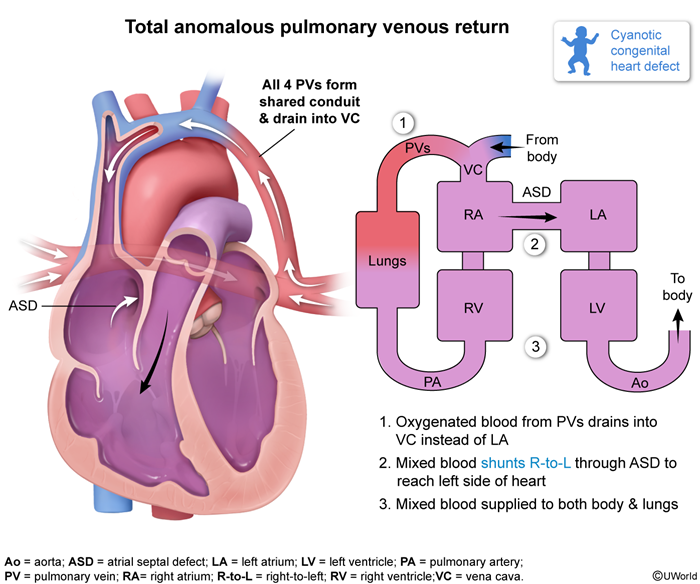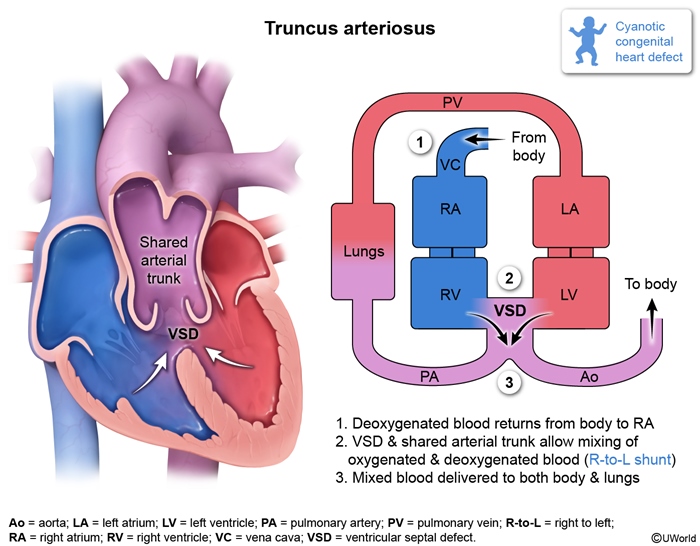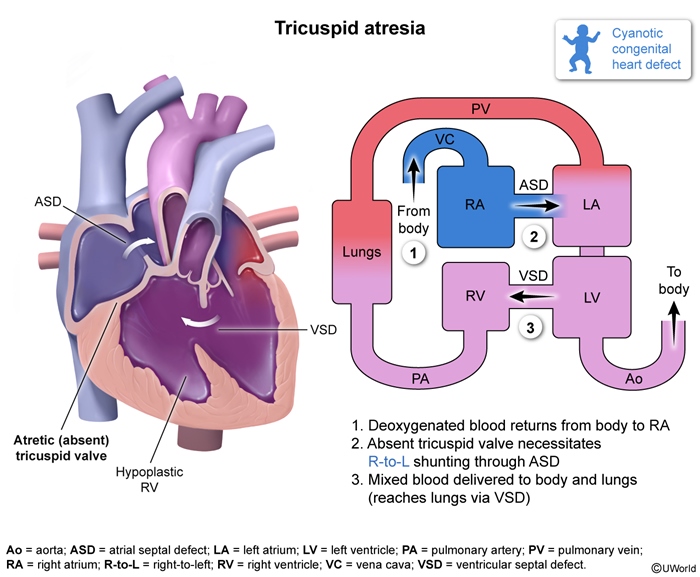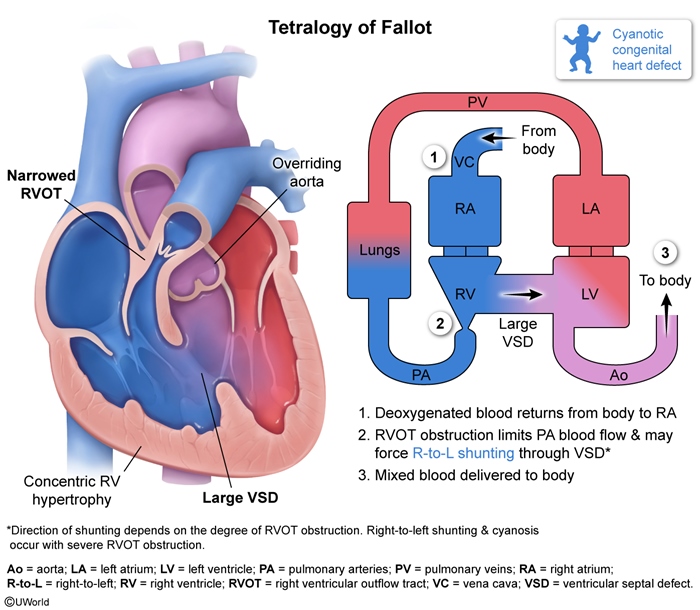Overview Of Congenital Heart Diseases
Article Sections
Introduction
Congenital heart disease (CHD) affects approximately 1% of the population; the clinical presentation can be highly variable depending on the type and severity of the defect. The most complex forms of CHD usually involve a substantial disruption of the normal cardiac blood flow (Figure 1). Some types of CHD classically present with cyanosis at birth or during infancy, whereas other types do not typically cause cyanosis. Cyanotic CHD is important to recognize because it often requires prompt and definitive management.
Pathophysiology
Cyanosis is a blue discoloration of the skin and mucous membranes that results from elevated levels of deoxygenated hemoglobin in the arterial blood. In patients with a normal hemoglobin concentration, cyanosis generally develops when approximately 20% of the total hemoglobin binding sites are deoxygenated (this correlates with an approximate pulse oximetry measurement of >85%). Cyanosis in CHD is usually due to anatomic right-to-left shunting that allows deoxygenated blood to bypass the lungs and move into the systemic circulation without being fully oxygenated.
Continue Learning with UWorld
Get the full Overview Of Congenital Heart Diseases article plus rich visuals, real-world cases, and in-depth insights from medical experts, all available through the UWorld Medical Library.
Figures
